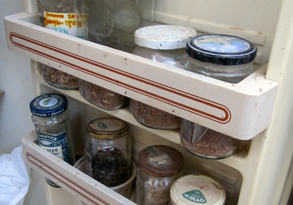 |
|
Sowing Seeds Directly in the GardenMany types of plants should be sown directly in the garden to avoid disturbing their roots during early stages of their growth. Among there are beets, carrots, sunflowers, melons, squash, radishes, and parsnips.  Sunflowers need to be sewn directly into the garden. Storing SeedsSeeds should be stored under dry conditions and within a fairly constant temperature - the cooler the better. Many people store seeds in the freezer, while not necessary this can prolong the life of the seeds.  Garden PreparationA garden bed prepared properly for seeding is one which is free from large rocks and other debris. The surface should be relatively level to avoid the formation of puddles of water after irrigation or rain.  Seeds will begin to sprout just days after sowing. To further prepare the bed for seed sowing, shallow furrows can be made with your hand on the surface of the bed. The spacing of seeds will depend on the growth habits of the mature plant. Generally, furrows should be spaced about 5 inches or 12 centimeters apart from each other. The seeds can then be placed in the bottom of the furrow between 2 - 4 inches or 5 - 10 centimeters apart, depending on the size of the mature plant. The furrow should then be closed up and patted down (not too hard) to ensure that the seeds are not sitting in an air pocket but rather are surrounded by moist soil. SproutingThe ultimate sprouting conditions for most seeds are a slightly warmer temperature (between 15 and 21 °C or 60 and 70 °F). They need to be kept moist but they should not be left soaking in water. Seeds that are kept too moist are in danger of rotting. Seeds which are allowed to dry out will not develop properly and will die. The ultimate sprouting conditions for most seeds are a slightly warmer temperature (between 15 and 21 °C or 60 and 70 °F). Happy sowing! Resources:
Contact Lotan Center for Creative Ecology |
|
|

